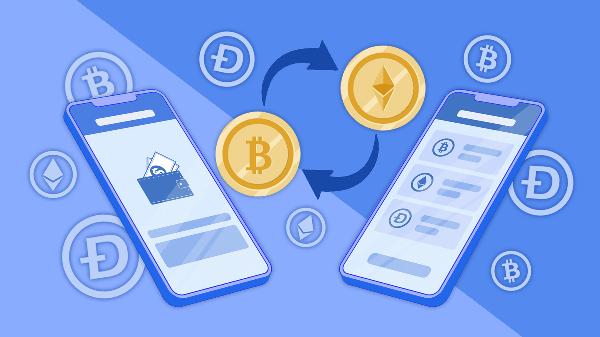E Money: The Future of Digital Payments and Transactions

Strong 8k brings an ultra-HD IPTV experience to your living room and your pocket.
As technology continues to evolve, the way we handle money is undergoing a revolutionary transformation. E money, or electronic money, is leading this charge, offering a seamless, secure, and efficient method for managing financial transactions. From daily purchases to international transfers, e money is becoming the future of digital payments. This article explores the concept of e money, its advantages, how it works, and why it's poised to shape the future of global financial systems.
What Is E Money?
E money refers to a digital representation of traditional currency stored electronically. Unlike physical cash, it exists in a virtual form, typically managed through electronic wallets (e-wallets), prepaid cards, or online accounts. E money is regulated by financial institutions and central banks, ensuring it maintains its value and legality just like physical currency. It is widely used in online transactions, mobile banking, peer-to-peer payments, and even for in-store purchases via digital platforms.
How E Money Works
E money transactions are simple. Users fund their e-wallets or prepaid accounts through a variety of methods, including linking bank accounts, using credit/debit cards, or through direct transfers. Once the funds are stored electronically, they can be used to make payments, send money to other users, or make purchases online and offline.
Most e-money platforms operate via mobile apps or websites, offering features like payment tracking, budgeting tools, and real-time transaction notifications. Cryptography and advanced encryption techniques ensure secure and private transactions, protecting users from fraud and theft.
The Evolution of E Money
E money started gaining traction with the rise of e-commerce in the early 2000s. The shift toward online shopping demanded more efficient and secure ways to pay digitally. Services like PayPal and Skrill paved the way for e money’s acceptance, allowing users to store funds electronically and make transactions without relying on traditional banks.
Over the years, mobile-based platforms such as Apple Pay, Google Pay, and other digital wallet services have significantly expanded the scope of e money. Today, millions of users around the world rely on e money for day-to-day transactions, bill payments, and even cross-border remittances.
The Role of E Money in Digital Payments
The widespread adoption of e money is largely driven by its convenience and security. Unlike cash or checks, e money is instantaneous—payments can be processed within seconds. This is particularly beneficial for online businesses and e-commerce platforms that need to streamline their payment systems for customers.
E money also enhances the ability to track financial activities. Users can easily monitor their spending habits, set transaction limits, and avoid overdraft fees by keeping their accounts in check. Additionally, because everything is digital, users can pay bills automatically, eliminating the need to manually handle recurring payments.
For businesses, e money can help reduce costs associated with handling physical cash, improve efficiency in bookkeeping, and reach a wider customer base.
Security and Regulatory Framework
Security is one of the key concerns in digital payments. E money platforms employ various layers of protection, including encryption, two-factor authentication (2FA), and biometric verification, making it extremely difficult for hackers to compromise accounts. In many cases, digital wallets are considered safer than carrying physical cards or cash.
E money is also subject to regulation by central banks and government bodies. These regulations ensure that e money platforms adhere to anti-money laundering (AML) and counter-terrorism financing (CTF) laws, protecting users from fraud and illegal activities. Many countries have set up specific frameworks, such as the EU’s Electronic Money Directive, to regulate the issuance and use of e money.
The Future of E Money
E money has a bright future as it continues to evolve and integrate with emerging technologies like blockchain and artificial intelligence (AI). One of the most exciting prospects is the rise of Central Bank Digital Currencies (CBDCs). These digital currencies, issued by central banks, are a form of e money that could eventually replace physical money in national economies.
Furthermore, with the continued growth of mobile technology, especially in developing regions, e money can bridge the gap between the unbanked population and financial inclusion. In many developing countries, mobile wallets have already transformed access to banking services, allowing people without access to traditional banks to participate in the global economy.
Key Advantages of E Money
1. Speed: E money transactions are processed instantly, eliminating the delays often associated with bank transfers.
2. Convenience: Users can access and manage their money at any time, from anywhere, via their mobile devices or computers.
3. Security: Enhanced security features like encryption, 2FA, and biometric verification protect users from theft and fraud.
4. Cost Efficiency: E money reduces transaction fees, especially for international transfers, making it a more affordable option.
5. Financial Inclusion: E money has the potential to provide banking services to unbanked populations, particularly in developing countries.
Challenges Facing E Money
Despite its many advantages, e money faces several challenges. One of the major concerns is the digital divide—regions with poor internet infrastructure or low smartphone penetration may struggle to adopt e money services. Additionally, the regulatory environment is still evolving, and different countries may impose varying restrictions and requirements, complicating cross-border use.
Privacy is another concern. Although encryption and security measures are in place, users must trust that their personal data is being handled responsibly. Companies that manage e money services must comply with data protection laws to maintain consumer trust.
Conclusion
E money is undeniably shaping the future of digital payments and transactions. With its speed, convenience, and security, it offers a compelling alternative to traditional banking methods. As technological advancements continue and regulatory frameworks evolve, e money is likely to play an even more significant role in transforming how we handle money globally.
For both consumers and businesses, embracing e money means embracing a future of faster, safer, and more inclusive financial transactions. Whether it’s making purchases online, paying bills, or transferring funds internationally, e money is redefining the digital economy and paving the way for the cashless society of tomorrow.
Note: IndiBlogHub features both user-submitted and editorial content. We do not verify third-party contributions. Read our Disclaimer and Privacy Policyfor details.


